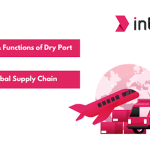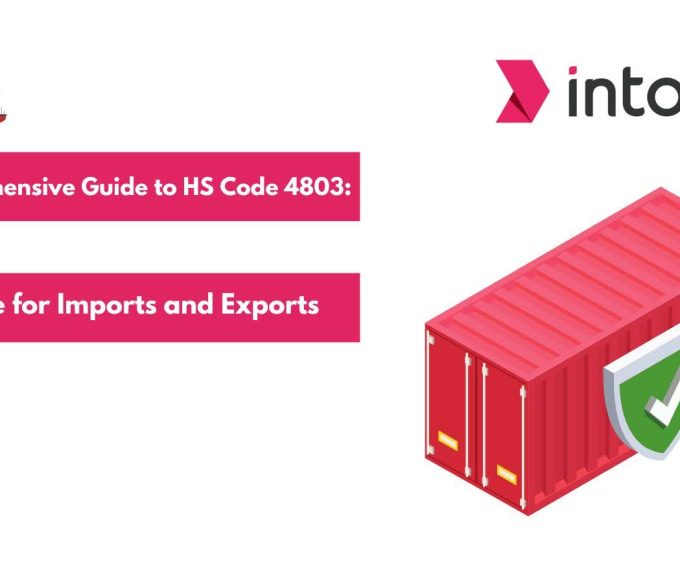Understanding ONC charges in shipping is essential for managing your logistics costs effectively. ONC charges, including On-Carriage and Pre-Carriage, are significant in your shipping expenses. You can better plan your budget and avoid unexpected costs by getting a clear picture of these charges. In this article, we’ll break down the definition of pre-carriage and on-carriage, including their responsibilities and how they affect your bottom line.
Let’s get into the details and make these concepts work for you.
Understanding Pre-Carriage in Shipping
Pre-carriage involves transporting goods from the point of origin to the loading port, where the shipping company loads the cargo into a container for its main journey. This stage takes place before the container is officially loaded at the port.
Pre-carriage usually occurs at the loading port or in nearby areas. The goal is to prepare the cargo for the next shipping stage.
Types of Haulage for Pre-Carriage:
1. Carrier Haulage: The shipping line handles the transportation of goods from the origin to the loading port. This means the shipping company is responsible for arranging and managing transport to the port.
Example: Imagine you have a Bill of Lading that specifies a place of receipt in a city miles away from the port. The shipping line will manage and cover the costs of goods from this city to the loading port. This means you don’t have to arrange or pay for transport to the port; the shipping line takes care of it.
2. Merchant Haulage: In merchant haulage, the client or a third-party transporter arranges and manages the transportation of goods to the loading port. The client or their chosen agent is responsible for organizing and paying for this part of the journey.
Example: Consider a scenario where you must transport goods from a factory to the loading port. If you opt for merchant haulage, you might use rail or road transport to move your cargo to the port. In this case, you or your chosen transporter handle the logistics and costs of getting the cargo to the port while the shipping line manages the container loading and main shipping.
Understanding On-Carriage in Shipping
On-carriage refers to transporting goods after they have been discharged from the port of arrival. This stage involves moving the cargo from the port to its final destination, whether a warehouse, distribution center or directly to the end customer.
On-carriage typically occurs at the discharge port or in its surrounding areas. The objective is to ensure the goods reach their final delivery point after being unloaded from the container.
Types of Haulage for On-Carriage:
1. Carrier Haulage: In carrier haulage, the shipping line is responsible for transporting the goods from the discharge port to the final delivery location. The shipping company manages this part of the journey, ensuring that the cargo is delivered as per the terms of the shipping contract.
Example: Imagine you have a Bill of Lading that specifies a place of delivery, such as a warehouse several miles from the discharge port. In this scenario, the shipping line will handle the transportation of goods from the port to the warehouse. The shipping line delivers the cargo to the specified location, ensuring a seamless transition from port to final destination.
2. Merchant Haulage: The client or a third-party transporter is responsible for transporting goods from the port of discharge to the final destination. The client arranges and covers the costs of this leg of the journey using their chosen transport method.
Example: Consider a situation where your goods arrive at the discharge port and must be transported to an inland distribution center. If you opt for merchant haulage, you might arrange to move the cargo by rail or road to the distribution center. In this case, you or your appointed transporter manage the logistics and bear the cost of transporting the commodities from the port to the final delivery point.
Who is Responsible for Paying Pre-Carriage and On-Carriage?
The duty to pay for pre-carriage and on-carriage is determined by the terms agreed upon by the buyer and seller, which are often detailed in the Incoterms (International Commercial Terms) of the shipping contract.
Who Pays for Pre-Carriage?
- Seller’s Responsibility: If the Incoterms used are FOB (Free On Board), CFR (Cost and Freight), or CIF (Cost, Insurance, and Freight), the seller is usually responsible for pre-carriage. It means the seller pays for the transportation of goods from the origin to the port of loading.
- Buyer’s Responsibility: In other Incoterms, such as EXW (Ex Works), the buyer is accountable for all transportation costs from the seller’s premises, including pre-carriage to the port of loading. In this case, the buyer pays for pre-carriage.
Who Pays for On-Carriage?
- Buyer’s Responsibility: If the shipping terms are CIF, CFR, or FOB, the buyer is typically responsible for on-carriage. It means the buyer pays for the transportation of goods from the port of discharge to the final destination.
- Seller’s Responsibility: If DAP (Delivered At Place), DDP (Delivered Duty Paid), or DPU (Delivered at Place Unloaded) Incoterms are used, the seller pays for on-carriage. The seller is accountable for delivering the goods to the final destination after discharge from the port.
Understanding who pays for these stages of transportation is crucial when negotiating shipping terms, as it directly impacts the overall cost and responsibility for both parties.
The Role of Pre-Carriage in FCL Shipping
In Full Container Load (FCL) shipping, pre-carriage plays a vital role in logistics. Pre-carriage involves transporting containerized goods from the point of origin, such as a factory or warehouse, to the port of loading. In FCL shipping, where an entire container is dedicated to a single shipment, ensuring that the goods are securely transported to the port is crucial. This step ensures the container is ready for its main ocean voyage, minimizing delays and potential issues.
Pre-carriage is particularly important in FCL shipping because it determines how efficiently the container reaches the port. Depending on the arrangement, pre-carriage can be managed by the shipping line (carrier haulage) or the client (merchant haulage). The selection between these two options can affect the overall cost and logistics of the shipment.
Are you looking for reliable door-to-door FCL services from India to the USA?
Intoglo offers seamless FCL shipping solutions, ensuring your goods are transported securely from your doorstep to the final destination. With our expertise, you can experience hassle-free shipping. Contact us today to learn more about our door-to-door FCL services!
Conclusion
Understanding the different types of freight charges, particularly On-Carriage and Pre-Carriage, is essential for managing your logistics efficiently. Depending on the responsibilities outlined in your shipping agreement, these charges can significantly impact your shipping costs. Whether you are dealing with carrier or merchant haulage, knowing who pays for these services and how they fit into your overall logistics plan is crucial.
Efficient handling of pre-carriage and on-carriage ensures that your goods move seamlessly from origin to destination, minimizing delays and unexpected expenses. By carefully planning and understanding these charges, you can streamline your shipping process and make more informed decisions.
Get transparent shipping quotes from the cross-border FCL shipping experts at Intoglo. We offer comprehensive shipping solutions with over 50 warehouses in the USA, dedicated long-term storage options, and delivery to 41,000+ zip codes across the country. With PAN India and USA trucking services for all kinds of cargo and partnerships with leading truckers, we ensure a smooth and efficient logistics experience. Contact us today to optimize your shipping process!









Leave a comment